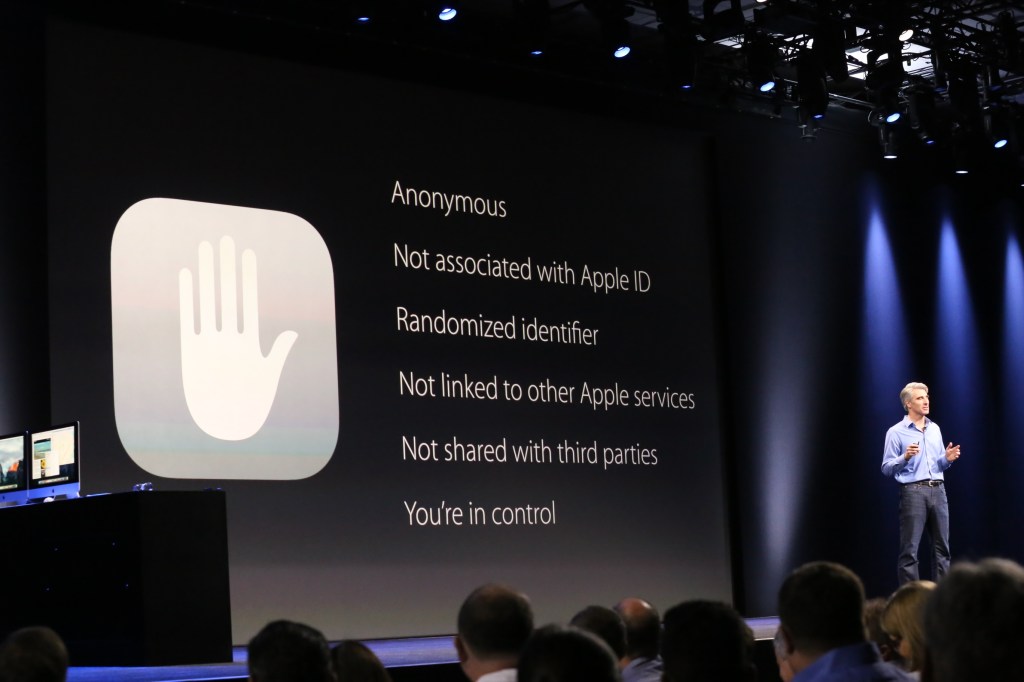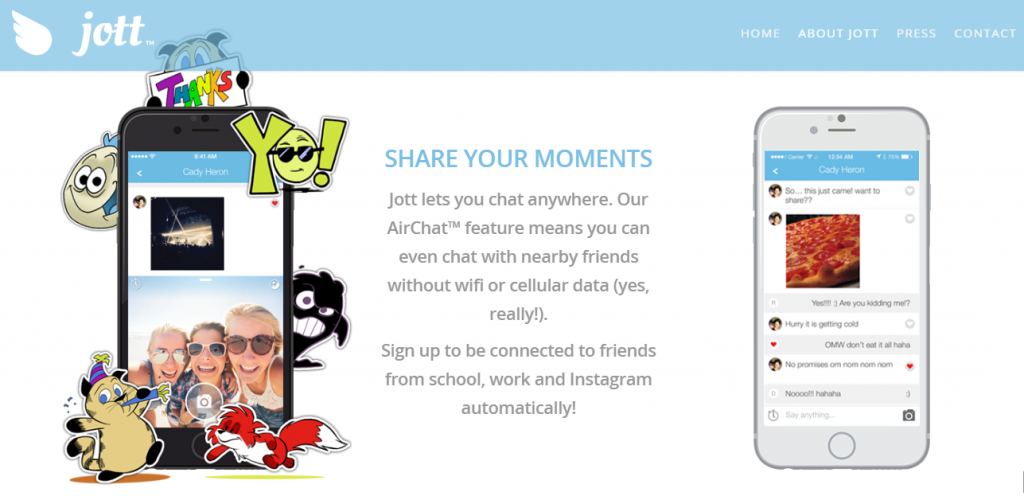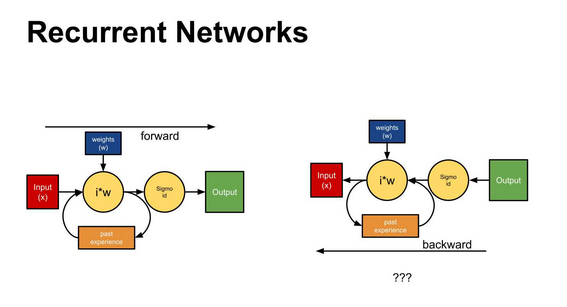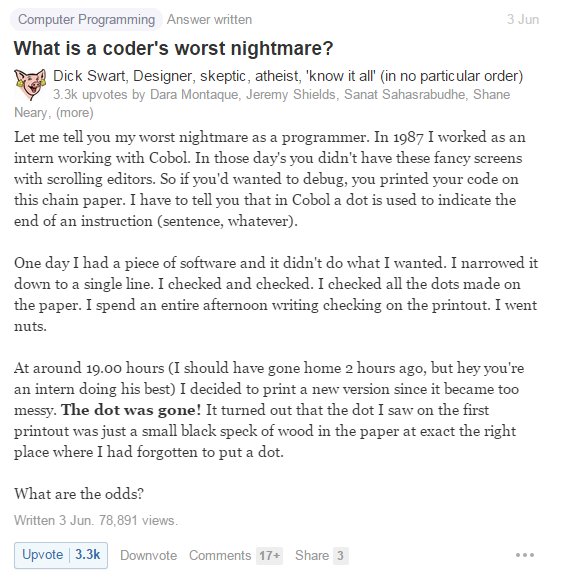Sections
Code
[avatar user=”malm” size=”small” align=”left” link=”file” /]
Bloomberg devoted a whole issue to a single article written by Paul Ford attempting to convey the world of corporate software simply entitled Code. The online version is an extraordinary pyrotechnic tour de force that comes with its own GitHub repository for the awesome interactive graphics like this simulation of logic gate operation:
It is a long read at 38,000 words but well worth the effort particularly if you work with software technology but don’t have a great deal of insight of what software is and how it works:
It takes something both very important and hard to understand, and makes it understandable to an audience of smart but non-expert readers. It does this incredibly well. It mostly feels like fun, not work.
Reading it made me realise that a lot of my career has been spent being “the man in the taupe blazer” or TMitTB as Ford calls him:
Here we go again. On the other side of your (well-organized) desk sits this guy in his mid-30s with a computer in his lap. He’s wearing a taupe blazer. He’s come to discuss spending large sums to create intangible abstractions on a “website re-architecture project.” He needs money, support for his team, new hires, external resources. It’s preordained that you’ll give these things to him, because the CEO signed off on the initiative—and yet should it all go pear-shaped, you will be responsible. Coders are insanely expensive, and projects that start with uncomfortably large budgets have an ugly tendency to grow from there.

Ford’s epic helps explain why software skills are in such high demand that they are eating the job market. Coding is just one aspect of this phenomenon however. If anything, data analytic capabilities are in even more unprecedented demand. There has never been a better time to develop software and analytics skills:
“organizations that are leveraging analytics in their strategy have not only world-class data scientists – but they also support “analytical amateurs” and embed analytics throughout all levels of their organization and culture. For this reason, the need for analytics skills is exploding within a variety of employers, and analytics and data-related themes top many corporate strategy agendas.”
Apple
- Apple’s annual Worldwide Developer Conference (WWDC) took place this week. The most noteworthy announcement was the launch of the Apple Music streaming music service promising to “change the way that you experience music forever“. Apple are promoting the primacy of human curation over algorithms with radio stations like the global Beats 1 where a “team of experts” led by ex-Radio 1 DJ Zane Lowe choose the playlist. Priced at just $9.99 a month following a complimentary 3 months, it’s clearly taking aim at Spotify Premium. And there’s a tie-in of course with Siri:
If you’re a big fan of using Siri to pick songs, you’ll be able to do that with Apple Music. The virtual assistant can pick tracks based on the year of release, artist or chart position for a given month and year (April 2012, for example).
- The Verge ran through the other WWDC highlights which in the main were “low-key but fairly solid tweaks to Apple’s software products, from new versions of OS X and iOS to updates of its car, home, and watch software”. iOS will increment to v9 and OS X to 10.11 (or “El Capitan”). There were a couple of other standouts, though. Firstly, the announcement of Proactive Assistant, a significant enhancement to Siri to “bring it in line” with Google Now but with a notable focus on data privacy:
The proactive assistant is a mix of Google Now and similar tools that aim to make the user’s life easier by trying to infer what they may want to do at a given time — but with a focus on privacy.

- Then there was the announcement that Apple Pay will launch imminently in the UK. Several commentators see this development as a potential global game changer for the service:
In Apple’s favour is the fact that contactless payment methods are well established in the UK, ironically aided by the likes of McDonald’s. … Hence, Apple may find that the UK is a far more receptive audience than in the USA, where the entry of Pay has had a relatively low impact.
- Apple Pay is not entirely without risk. Mobile security firm Wandera published details this week of a specific attack that harvests credit card details by spoofing the enrolment process. Whether this sort of issue makes any dent in consumer uptake remains to be seen however:
Using inexpensive (less than $100) and readily-available, portable equipment in a laboratory setting, Wandera’s security researchers have identified a social engineering method in which hackers can inject a fake captive portal page which pops up and imitates the Apple Pay enrolment process, prompting the user to enter their credit card details. These details, including the security code, can then be easily harvested and used for fraudulent purposes.

- One Quartz reviewer explains why he is very happy with his Apple Watch and particularly enamoured by the accompanying Activity app:

- Meanwhile the potential for Apple Watch as a luxury purchase in China is dramatically highlighted in a purchase intent survey which is off the scale as well as evidence of Apple’s position at the top of the luxury pantheon:


- This LinkedIn respondent explains how the luxury watch industry should respond. In short, not by trying to ape Apple but rather in moving the debate to higher ground:
The key question for me is how the luxury watch market should respond to this challenge. I believe the single biggest risk that they face is creating products like the Apple watch. This will signal the beginning of the end. As a luxury watch maker they must uphold luxury values. They must bestow on their owner the sense of time and place that reflects new luxury values. To move away form this would be to move away from the thing that is most valuable. The thing Apple wished they had.
Devices and Manufacturers
- HTC have dramatically cut their revenue forecast for Q2 “roughly 30% downward revision of the guidance it offered just a couple of months ago“. It seems their Android smartphone flagship, the HTC One M9, hasn’t really taken off despite initial promising signs post MWC. According to their CEO they need to diversify and “aggressively develop new business opportunities beyond smartphones” to differentiate themselves:
“When the One M9 was launched many commentators were underwhelmed by what they perceived as the lack of innovation in a smartphone that was very similar in design and spec to its predecessor. But HTC is hardly alone in this respect, with many of its competitors struggling to demonstrate meaningful innovation every year. Compounding the problem, market leaders Samsung and Apple are perceived to be offering something new and it’s likely that the Q2 smartphone numbers will show increased market share for both of them.”
- Another compounding factor are persistent reports of overheating and poor camera experience on the One M9 which is built on the Qualcomm 8994 64-bit chipset. HTC have finally this week pushed out a software update that sounds like it addresses some of those issues.
- Sony on the other hand have concentrated on making a better standalone camera with their take on the ultimate point-and-shoot, the RX100-IV:
it’ll fit in your clothes and takes photos that’d make your phone cry. … Sony claims it’ll shoot near-broadcast-quality 4K video for five minutes at a time, and can record slow-motion video at up to 960 frames per second.

- Blackberry might be making an Android phone. Just like everyone else.
Google and Android
- Google whichphone selector purportedly lets you choose the “right Android phone for you” but if you up the price point, it seems to limit your choice to the usual suspects:
- Google “is reportedly in talks with Chinese phone makers on introducing its Play app store to the country“. The suggested outline of the deal highlights how critical establishing a presence for its service portfolio in China is to Google:
three of China’s six major handset makers–ZTE, Huawei, Coolpad, Lenovo, Vivo and Oppo–received offers from Google, which would pay US$1 for each phone that is pre-installed with a version of Google Play.
Apps and Services
- This must read post from Andrew Chen summarises comprehensive new data gathered on Android app retention curves. The data reveals that an average app loses around 80% of its daily active users (DAU) within the first three days following install.
we can see that the average app loses 77% of its DAUs within the first 3 days after the install. Within 30 days, it’s lost 90% of DAUs. Within 90 days, it’s over 95%. Stunning. The other way to say this is that the average app mostly loses its entire userbase within a few months

- Even best in class apps are not immune to the “most tragic curve in tech” though they plateau at a much higher percentage of active users. Chen’s view is this is down to a relentless focus on first use experience and direct relevant content to ensure initial and ongoing attention:

- Popular language education service Duolingo is now valued at $470million.
Duolingo says its free language learning tool currently has over 100 million users worldwide. More people are now using it to learn languages in the U.S. than in the entire public school system, the company claims.
- Talkdesk is a good example of the kind of new enterprise proposition that has been enabled by cloud technology and they’ve just secured an additional $15million funding round. Their platform allows customers to spin up a scalable, virtual call centre via a web browser and configure it to connect to other popular enterprise SaaS business tools:
Companies use Talkdesk to create centers where customers can call into in order for assistance and feedback. Those calls are connected to internal company databases like Salesforce and Zendesk, which bring up all the relevant information about a caller in order to help a customer service representative better resolve the issue or route that customer to the best person.

- Jott is the latest OTT Messaging proposition to go exponential. It seems to have taken off amongst US teens because it offers them the ability to communicate off grid without needing cellular connectivity via a Bluetooth mesh network:
Teens who don’t have a data plan that will allow them to text are using their iPods and iPads to message each other on a closed network within a 100-foot area within school limits.
- Firechat offers similar functionality but the attraction for teens with Jott seems to lie in the way that P2P text messaging is integrated into the app. That’s an activity that appears to take up a sizeable chunk of teen life – over 100 texts sent a day on average:
And that ability to easily message peers directly within a network is the key. While apps such as Facebook, Snapchat and Instagram rank at the top for social networks among teens, texting reigns supreme. According to Niche data, about 87 percent of teens text daily, compared to 61 percent of those who say they use Facebook, the next most popular choice.
It’s tough to know why texting is the preferred method. What is out there is mostly anecdotal. Perhaps texting is simply the easiest form of direct messaging to one’s friends? Whatever the reason. They do a lot of it. More than adults. Girls send, on average, about 3,952 text messages a month, and boys send closer to 2,815 text messages a month, according to the Pew study.
Open Source, Cloud and DevOps
- Richard Stallman (rms) is coming to London to give a talk on July 4th. It’s a good opportunity to highlight the irony that rms who many view as the father of the open source software (not that he’d approve of that term) that powers much of the Internet doesn’t himself do social media:
Please note: Stallman has never had a Facebook account. He has never posted on Twitter, but has a Twitter account for posting comments on other sites. (Learn more.)
- InfoQ profile Capgemini’s Apollo open source microservice and big data platform which represents perhaps the best collection of leading edge technologies for building a software-defined data center today:
- Packer for automating the build of the base images
- Terraform for provisioning the infrastructure
- Apache Mesos for cluster management, scheduling and resource isolation
- Consul for service discovery via DNS
- Docker for application container runtimes
- Weave for networking of Docker containers
- HAProxy for application container load balancing
- This InfoQ post highlights the curious lack of a definitive definition for DevOps and profiles two industry perspectives from IBM and Forrester Research respectively. The first is more a description of broad DevOps concerns than a specific definition:
- DevOps exists to help the business win
- The scope is broad, but centered on IT
- The foundations are found in Agile and Lean
- Culture is very important
- Feedback is fuel for innovation
- Automation helps
- The second is based around the use of the CALMSS acronym which offers a handy mnemonic covering the same sort of territory:
- Culture – Own the change to drive collaboration and communication
- Automation – Take manual steps out of your value chain
- Lean – Use lean principles to enable higher cycle frequency
- Metrics – Measure everything and use data to refine cycles
- Sharing – Share experiences, successful or not, to enable others to learn
- Sourcing – Solid sourcing strategy to extend the ecosystem
- This riposte to Martin Fowler’s mildly controversial “Monolith first” post suggests you skip the monolith and go straight to microservices without passing Go 🙂
Asia
- In more evidence of a VC-led investment boom in Asia, entrepreneurial Indians finishing studying in the US may find their prospects are better back home as opposed to staying on rather like Kunal Bahl the founder of ecommerce startup Snapdeal.com now valued at $5billion.
- However for those stuck in the old mode of Indian IT, things don’t look so rosy according to this LinkedIn post which really seems to have hit a chord:
Employees doing tasks that can be automated, the armies of middle managers who supervise them and all those with mediocre performance reviews and without hot skills are living on borrowed time.
- The advice to anyone in such a position is to reinvent themselves:
What’s happening in the industry is ‘creative destruction”. New technologies are destroying old jobs but creating many new ones. There is an insatiable demand for developers of mobile and web applications. For data engineers and scientists. For cyber security expertise. So for anyone who is a quick learner, anyone with real expertise, there will be abundant opportunities.
- Talking of reinvention, Penang in Malaysia previously famed for its curry, is now the “Silicon Island” of Asia. Its success is built on the Internet of Things with the attendant consequences of spectacular growth:

Security
- Matt Asay provides a personal perspective on why your business “really really really needs two factor authentication“. Many major internet services now provide 2FA support but implementations vary in usability with Apple particularly idiosyncratic with the requirement to use application specific passwords on non-Apple kit. Even so, you still need to climb that barrier to switch it on and for LastPass too while you’re at it given this week’s developments. At a business level, 2FA can be integrated using a SaaS platform proposition like Gigya’s:
Breaches are no longer a technology issue. They’re a core business issue. According to a recent survey of 200 corporate directors conducted by the New York Stock Exchange and the security company Veracode, more than two in five respondents said that CEOs should face the brunt of any breach-related backlash.
- David Wood suggests that Marc Andreesen’s celebrated comment that “software is eating the world” should be updated to take into account the ensuing security fallout and the catastrophic business impact it could have for those affected:
We live in a time of rapid technology change. As software eats the world, it leaves more and more aspects of the world vulnerable to problems in the software – and vulnerable to problems in how that software is used, deployed, and updated. … Before long, security will be eating the world. Companies whose software systems fall short on security will be driven out of business.
- Steven Sinofsky is equally concerned by the potential for havoc from future security breaches but suggests we need less rhetoric and more product:
The risk that a company will be breached and the data put to uses not intended by the company is not only there, but it is significant. This is a technology problem our industry needs to solve. One thing is clear and it is that the biggest companies are the biggest targets and the largest technology companies are (I would assert) the most savvy and adept at these issues. But the problem is incredibly difficult in a world of nation-states leading some attacks.
Wearables and the Internet of Things
- Security concerns notwithstanding, GoPro want to connect their camera products to the cloud:
when a camera is plugged in to be charged, the service would upload the footage to a cloud service, eliminating the tiresome task of manually transferring the data from an SD card into editing software. From the cloud service, customers could edit the footage and share it. … there could be a feature where long videos are cut into highlight reels, which if implemented, would facilitate more shared footage and that’s what GoPro wants.
- Purewrist “is a fashionable silicone bracelet that contains an embedded NFC payment chip that lets you go through life without Apple Pay.” They just launched the product on Indiegogo.

- UK luxury watch startup Bremont aren’t a technology proposition as such. In fact they are barely a decade old and still very small. However, through focussing on marketing and the cultivating the image of a much-older heritage brand they’ve managed to secure a partnership with Oracle’s Team USA in the America’s Cup.

Smart Retail
- Facebook have made a major move into the smart retail space with the announcement that they are going to offer businesses free Bluetooth beacons through their Place Tips system. The use of beacons for microlocation services is something many retail brands have been playing with. Facebook’s entry into this space could be a watershed provided they are able to allay user fears around data collection and privacy. An open alternative might provide some interesting competition:
Once a business – such as a coffee shop or restaurant – sets up a beacon, it can detect when a Facebook user is within a set distance. … The beacon can then send “fun, useful and relevant” information into the user’s News Feed.

- Timpson’s are a 150 year-old retail chain best known for shoe repairs and key cutting. Not any more – they have a lucrative sideline in fixing broken smartphone and tablet screens.

Hardware
- Awesome Hackaday post on a DIY passive radar system built using off the shelf Software Defined Radio (SDR) dongles and some Python scrips. The whole system cost less than $100:
- The popular 4tronix Pi2Go robot for hobbyists is now available on Amazon. Do yourself a favour and buy the fully assembled version – it costs only £12 more than the kit version which requires a non-trivial amount of construction effort which isn’t necessarily all that much fun, unless you especially like soldering. The local Code Club has one of these connected up to ScratchGPIO for the children to play with. It’s also possible to access robot functionality directly via Python calls that wrap GPIO.
- Hackaday preview a “a lego printer that prints lego“. Presumably a future goal would involve adding it to the RepRap canon of 3D printers that can print themselves.
- Dyson’s CYCS desk lamp claims to last 37 years with a price to match – it retails at $649 for the entry level model:
Using Heat Pipe technology, the lamp uses a system similar to what’s found on satellites to keep eight LEDs cool and prolongs their life. The heat is pulled away from the bulbs and directed through an aluminum heat sink that spans the length of the lamp’s shaft. Each of those LEDs sits in a conical reflector to cut down on glare and added eye strain.

Big Data and Analytics
- This TechCrunch post outlines the business case for tools and services which seek “world-changing potential” rather than pander to the 1%. The specific examples provided aren’t all equally world-changing but the overall point is a good one, namely that democratisation of access to data is key to creating potential:
Data is power. Those who can wield data effectively or collect data where previously it was unavailable can fight powerful monied adversaries and force social change.
- This excellent InfoQ article outlines the prerequisites for any IoT OEM wanting to build a service on top of their hardware. Although there is huge potential in IoT, any organisation seeking to build meaningful differentiation on top of sensor hardware needs to first of all do their groundwork. Only when they have established the infrastructure, methods, security measures and culture to work effectively at scale with data can they move on to exploit it:
At the core, all of these possibilities require organizations to have foundational capabilities around their internal data hygiene and analytic infrastructure: data curation, ownership and quality standards, consistent enterprise architecture, cleanly integrated systems, automated data onboarding processes, and mature analytic expertise. Without the basics in place and well managed, it will be very difficult to rapidly react to and evolve new analytic and data management functions and abilities.
Robots
- DARPA’s 2015 Robotics Challenge took place last weekend. It was much anticipated and well-attended by luminaries like Elon Musk and Larry Page.
Twenty-five teams of university and corporate roboticists competed for the prize, which was first proposed in 2012 by the Defense Advanced Research Projects Agency. The robots were graded on their ability to complete eight tasks, including driving a vehicle, opening a door, operating a portable drill, turning a valve and climbing stairs, all in the space of an hour.
- In spite of growing hype around recent progress in Artificial Intelligence and robotics, the advances on show seemed to be relatively modest and focused on tasks that involved human and machine collaboration. Several of the robots such as IHMC’s Running Man demonstrated endearingly human qualities including falling over and struggling to pick themselves up:

- Engadget profiled some of the 25 participants. The Verge summed up proceedings well in their assessment:
The challenge showed that robots are getting faster, more autonomous, and more adaptable. It also showed that robots still have significant shortcomings. They need stronger actuators, more powerful batteries, better touch sensors, more dexterous grippers, and, until they get better at perception and object recognition, humans there to help them.
- The $2 million prize was eventually won by a South Korean team and their robot KAIST seen here turning a valve:
/cdn0.vox-cdn.com/uploads/chorus_asset/file/3783422/KAIST_s_DRC-HUBO_at_the_Valve_-Day_1.0.jpg)
- Robot vs. Samurai duel:
Artificial Intelligence and Machine Learning
- This Medium post provides an arresting vision of the impact of digital technologies in shaping the coming ‘Augmented Age’ as the author terms it. It underlines the existential importance of transforming your business to adapt to digital as highlighted last week:
The biggest companies in the world will all be technology companies, and commodities and financial services companies that aren’t technology based will find themselves losing market share rapidly over the next decade. The biggest banks in the world will likely be technology companies emerging out of developing economies serving the 2.5 Billion people that today are without a bank account, but most of whom will have a smartphone by the end of the decade. In 30 years the biggest companies will be based around personalized AIs, new energy and infrastructure, and most probably Asteroid mining for rare metals powering technology. Mobile and digital money will be significant players too.
- The more proximate concern raised by the increasing power and capability of Artificial Intelligence is technological unemployment. A contrarian voice on HBR takes issue with those of a dystopian perspective suggesting instead that we would all benefit from outsourcing some jobs to robots and providing this rule of thumb for where to draw the line:
any task that has an output or outcome which can be pre-stated or even guessed, should eventually be performed by a machine. Humans should eventually be left to more or less exclusively deal with open-ended endeavors that generate new organic value (as opposed to efficiency derived value).
- This TechCrunch post in a similar vein emphasises the importance of human-machine co-existence in driving the next phase of progress for Artificial Intelligence:
We use words like “super-proprioception” to describe this feeling of man and machine combining with a fluid interface to enable new capacities that man alone or machine alone would not be able to accomplish. … This is the ideal future of machine learning, where data is extracted only to benefit those it is extracted from, where machines don’t replace humans, but rather rely on human intelligence to translate patterns and behaviors into information that can change the world for the better.

- InfoQ technical presentation from a Facebook AI Research engineer on the current state of the art in Deep Learning highlights the use of RNNs and GPUs to speed up computation.
- RNNs have been at the forefront of recent hype around advances in Deep Learning with some suggesting they may be the starting point for human-equivalent AGI. Ray Kurzweil still seems convinced that that ‘technological singularity’ will happen around 2045. However he’s also looping cloud computing into another prediction for 2030 which provides a more blended human-computer vision as opposed to the presumably 100% non-biological singularity AI:
In just 15 years, Kurzweil believes, the human brain will become a hybrid of biology and technology, and we will “put gateways to the cloud in our brains.” And as the cloud becomes more and more advanced and is able to store increasing amounts of information, so too will our brains. By the late 2030’s or early 2040’s, Kurzweil said, the majority of brain function, at least in terms of information processing and thought processes, will be non-biological.

Software Engineering
- Buried within all the WWDC announcements was a potentially momentous one regarding Swift 2.0 which it seems will be open sourced by Apple:
With the release of Swift 2.0, Apple has promised that Swift will be open-sourced under a permissive OSI-approved open-source license, and will run on not only iOS and OSX but also Linux.
- The future of Swift is important for anyone involved in mobile application development and the iOS ecosystem. TechCrunch went as far suggest it could represent the logical endpoint of current enterprise app development. After all according to Apple “98% of Fortune 500 companies have an iOS app” today. The enhancement and open sourcing of Swift provides even more reason for Enterprises to embrace it as their primary mobile development language:
Thanks in large part to the ease of learning Swift – as compared to Objective-C -, the open sourcing of core libraries, and the ability for developers to create contextual apps on the latest versions of iOS, the opportunity to create apps, which can utilize the proactive features presented during the keynote, to drive employee productivity increases enterprises will likely accelerate, and expand, their native iOS development plans in the year to come.
- TechCrunch on managing developers. Like the man in the taupe blazer, you’re basically there to unblock the developers and translate what they are doing in terms that executives and customers can understand. And just because you’re in charge doesn’t mean you’re in control:
The great irony of management is that the higher up you go, the less actual control you have. When you are but a humble coder, you make the computer do exactly what you want; when you’re a manager, you only hope that people understand what you want, and then trust/pray that they do it both correctly and in a timely manner.

- Why your best ever agile tool is Excel, Enterprise duct tape for SMEs the world over.
- What’s a coder’s worst nightmare? Cobol probably. Enough to drive anyone dotty.
Digital Enterprise
- The global media industry has been forced to adapt business models for the digital age over the course of the last 20 years. The likes of Google and Facebook have profited hugely but many traditional newspaper print publishers have gone to the wall. HBR reviewed the landscape and suggested that it contains a lesson for traditional incumbents everywhere – they need to concentrate on innovating their business model and building new organisational equity around that pivot. Or face wipeout:
Historical strengths, like content creation, might need to be radically reconfigured or shared across organizations only with a great deal of care. New strengths, such as data analytics, might need to be built or acquired.
- One way of growing that equity is by studying and working with the startup community. Another is to buy it in. Either way, a vital key factor in any business model transformation is a strong, aligned underlying corporate culture. Merely having a strategy isn’t enough. Culture trumps Strategy and in the ideal case leads to the right individuals being empowered to deliver. PwC’s Strategy& digital consultancy unit this week published the results of a survey on the role of culture in organisation change initiatives underlining that message:
Findings also suggest strong correlations between the success of change programs and whether culture was leveraged in the change process — pointing to the need for a more culture-oriented approach to change.
- HBR go further and suggest that the ability of a company to exploit its networks may matter even more than culture or strategy:
Today, however, the most important capabilities and resources often lie outside of an organization. So executives need to leverage platforms in order to access ecosystems. Therefore, the ability to manage operations and the capacity to inspire employees is no longer enough. Today, we must learn how to shape networks around a shared purpose.
- A good example of the sort of outcome from exploiting networks of open innovation is outlined in this excellent Twilio White Paper. It explains why taking a software-defined approach to Enterprise problems is allowing “Software People” to leapfrog legacy and realise dramatic change. Twilio itself is a key part of that dynamic and is a key constituent of disruptive business platforms like TalkDesk:
“Software People are also using the cloud to change the definition of what’s possible inside traditional enterprises. They are rolling out everything from new security services to new call centers that are more flexible and cost less than their on-premises equivalents. For example, Intuit prototyped a two-factor authentication solution for its payroll services in just an afternoon, before putting it in place to protect the accounts of more than one million small businesses. Instead of distributing hardware tokens, Intuit sends verification codes via voice or SMS to its customers’ phones. The messages cost just a penny a piece—far less than the cost of managing an equivalent on-premises solution and a tiny fraction of the millions of dollars a similar system would have cost to deploy.”
Work and Culture
- A great Quora question asking for insights on some of the things you realise as you get older generated lots of wise answers. Many like the one that included this quote focussed on the importance of self-actualisation and awareness:
The more of life you experience, the more that experience makes clear just how little of all that was, all that is and all that will be, you will ever have the slightest chance of experiencing; you must eventually begin to realize that you never did know it all and you will be “partly green”, innocent uncomprehending until the day you die. If you are truly lucky you will be permitted to continue to pursue learning with the break of every day.
- Tim Cook made an important comment on diversity in advance of WWDC suggesting it was “the future of Apple” not just because it was the right thing to do in terms of representation but on business grounds: “the most diverse group will produce the best product“. There are hints that the next Apple keynote will be much more diverse.
- Fascinating Nick Carr piece on the “causal link between higher connection speeds and higher abandonment rates” and the profound implications of any such correlation on human behaviour:
Digital technologies are training us to be more conscious of and more antagonistic toward delays of all sorts — and perhaps more intolerant of moments of time that pass without the arrival of new messages or other stimuli. Call it the patience deficit. Because our experience of time is so important to our experience of life, it strikes me that these kinds of technology- and media-induced changes in our perceptions can have particularly broad consequences. How long are you willing to wait for a new thing? How many empty seconds can you endure?

- In the run-in to the recent UK General Election, the editor of Bloomberg Business accused the main UK political parties of “not doing enough to champion digital issues that matter” insisting that “internet technologies and the digital economy come across as an afterthought in their manifestos“. It’s a topic of growing importance in the US too and seems certain to become an increasingly important concern in the UK as digital technologies become an ever more integral part of our society and economy:
From a business perspective, there has never been a better time to start or grow a digital business in the UK or Europe. But these issues will affect businesses just as much as individuals. More broadly, politics is out of step on the skills debate. A sector crying out for talent, concerns abound around kneejerk policies on immigration and the EU. Broadband is important for startups, but if you’re ARM in Cambridge supplying chip technology to every smartphone in the world, you’re more interested in knowing where the next computer science grad or R&D budget is coming from.







[…] Ford was the celebrate ‘man in the taupe blazer’ in an epic 2015 Bloomberg publication called simply What is Code? also covered in this blog three years ago. […]